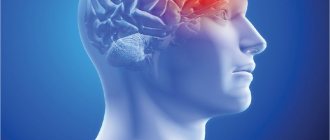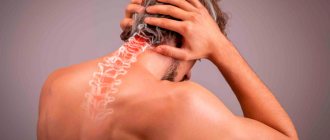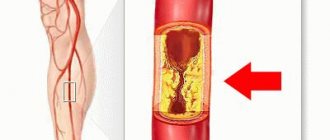If you are often worried about dizziness, increased heart rate, or pressure surges, then first of all you need to consult a neurologist (neurologist). It is an experienced neurologist at the EXPERT Clinic who will be able to carry out the differential diagnosis necessary to exclude other diseases with symptoms similar to VSD.
Neurologist Bezukh Svetlana Mikhailovna - Doctor of Medical Sciences, professor with 37 years of medical experience. The accumulated experience allows her to quickly formulate a diagnosis, prescribe only the necessary examination and effective treatment.
During the consultation, the doctor will conduct an examination and ask you in detail about your complaints - how, where exactly, in what situations your head hurts and feels dizzy, whether there are pressure surges, attacks of nausea, fainting, how long the attacks last and other questions.
The neurologist will also prescribe the necessary instrumental and laboratory examinations, which can be partially or fully completed immediately after the consultation:
- ECG
- Ultrasound of bracheocephalic vessels (head and neck)
- 24-hour ECG and blood pressure monitoring
- x-ray of the spine
- blood and urine tests.
Additionally, you may need to consult related specialists - a cardiologist, gastroenterologist, endocrinologist.
About vegetative-vascular dystonia
Vegetovascular dystonia (in other words, autonomic dysfunction) is a disorder of the autonomic nervous system.
The autonomic nervous system is part of the nervous system that regulates many processes in the internal organs. It is sometimes called the autonomic nervous system because... regulation occurs autonomously, i.e. without the participation of human consciousness. The autonomic nervous system conventionally has two divisions: sympathetic and parasympathetic, which are responsible for oppositely directed actions: for example, the parasympathetic division stimulates digestion, and the sympathetic one slows it down. Normally, the parasympathetic and sympathetic systems are in balance without predominance of one over the other.
Vegetovascular dystonia is an imbalance in the autonomic nervous system, the consequence of which is disruption of the functioning of internal organs. Vegetative-vascular dystonia affects up to 70% of the adult population and 15-25% of children.
Treatment
Help before diagnosis
When heart palpitations occur, a person needs to immediately sit down and take a comfortable position. In case of rare heart contractions, it is better to lie on your back with your legs slightly elevated. It is necessary to provide access to fresh air by opening windows or doors. Usually the state of health returns to normal within a few minutes. If the patient feels worse, complains of pain in the precardiac region or fainting, emergency medical attention is required.
Conservative therapy
Effective treatment can begin only after the causes of cardiac arrest have been established. Patients with severe illness receive intensive parenteral therapy in the hospital or intensive care unit, but in most cases outpatient treatment is sufficient. To eliminate the root cause of the symptom, normalize heart function and regulate the heart rate, the following is prescribed:
- Antiarrhythmic drugs.
In the arsenal of cardiologists there are 4 classes of drugs that are indicated for arrhythmias. They start with monotherapy, but if high doses of drugs are ineffective or intolerable, the optimal result is shown by a combination of 2-3 drugs. - Beta adrenergic agonists.
The drugs improve conductivity and increase heart rate in patients with atrioventricular block. Medicines are used in short courses. If therapy is ineffective, pacemaker installation is considered. - Anti-inflammatory drugs.
For myocarditis and rheumatic diseases, NSAIDs are recommended, which reduce inflammatory damage to the myocardium. In severe systemic processes, it is advisable to treat with glucocorticoids. - Metabolic agents.
Antihypoxants and antioxidants are widely used, which improve myocardial function in conditions of insufficient blood supply and prevent free radical oxidation. To increase the contractility of the heart muscle, ATP drugs are administered.
Causes of vegetative-vascular dystonia
To get rid of vegetative-vascular dystonia, it is first necessary to identify the cause of the disease. An experienced neurologist can do this.
Autonomic dysfunction can occur for one of the following reasons or a combination of them:
- factor of hereditary predisposition (in this case, manifestations of VSD appear already in childhood)
- past acute and chronic infectious diseases or intoxication
- chronic psycho-emotional stress, depression, sleep disorders
- sedentary lifestyle, sedentary work and, as a consequence, poor posture and cervical osteochondrosis
- bad habits (smoking, drinking alcohol)
- as a consequence of chronic disease of the endocrine (hormonal changes), cardiovascular system, gastrointestinal tract and nutritional disorders
- diseases of the central and peripheral nervous system.
Diagnostics
Even if cardiac arrest is a rare episode, it is a reason to consult a cardiologist. Percussion can determine the expansion of the borders of the heart. During auscultation, muffled heart sounds and the presence of functional or organic noises are heard. To find out the cause of the symptoms, the doctor needs to obtain data from instrumental and laboratory research methods. Typically used:
- ECG.
During blockades, the ECG reveals a prolongation of the PQ interval and periodic loss of the QRS complex. Extrasystole is manifested by an extraordinary ventricular complex, after which a complete or incomplete compensatory pause occurs. Additionally, 24-hour Holter monitoring is prescribed. - EchoCG.
Ultrasound examination is necessary to find organic cardiac pathology that could cause freezing. Sonography can detect thickening of the heart wall, anatomical abnormalities, and a decrease in ejection fraction. Dopplerography is indicated to assess blood flow in the great vessels. - Biochemical tests.
Given the high prevalence of coronary artery disease, it is necessary to examine the blood lipid profile. The content of cholesterol and atherogenic LDL often increases. To exclude rheumatism and myocarditis, acute-phase blood parameters are determined - CRP, sialic acids. - Myocardial markers.
If cardiac arrest is accompanied by a serious condition of the patient and a sharp increase in symptoms, it is necessary to exclude a heart attack. For this purpose, the blood is examined for the level of troponin, myoglobin, AST and CPK enzymes. A slight increase indicates unstable angina, higher concentrations indicate myocardial necrosis. - Additional research.
If organic pathology is suspected, an MRI of the heart is performed. To identify signs of left ventricular heart failure, chest radiography is used. When cardiac arrest progresses to acute coronary syndrome, coronary angiography is performed.
Symptoms and manifestations of VSD
A dysfunction of the autonomic nervous system can affect one or several organs at once. Depending on this, there are several types of vegetative-vascular dystonia (also called syndromes), each of which manifests itself in its own way.
| Syndrome | Symptoms |
| hypertensive syndrome | increased heart rate, short-term increase in blood pressure (up to 140-170/100 mm Hg), which decreases without taking medications |
| hypotensive syndrome | decreased blood pressure to 90/60 mm Hg, headaches, weakness, dizziness, cold hands and feet |
| cardialgic syndrome | symptoms resemble angina pectoris, but are not associated with physical activity: nagging, bursting pain and burning in the heart area behind the sternum |
| tachycardial syndrome | increased heart rate up to 90-120 beats per minute, increased blood pressure, a feeling of vibration in the head, redness of the face |
| asthenic syndrome | weather dependence, physical weakness and fatigue in the morning, worsening in the evening, decreased attention, ability to work, and in a lying position - comfortable well-being |
| visceral syndrome | intestinal dysfunction, pain and bloating, flatulence, indigestion |
| respiratory syndrome | soreness and feeling of a lump in the throat, inability to take a deep breath, pain and tightness in the chest |
| mixed form | combination of two or more VSD syndromes |
If vegetative-vascular dystonia is not treated
Any form of vegetative-vascular dystonia significantly affects the quality and lifestyle of a person, depriving him of the opportunity to work and live normally. In severe cases, VSD can be manifested by loss of consciousness, increased heart rate and other dangerous conditions. In addition, if vegetative-vascular dystonia is not treated and controlled, it can develop into serious diseases of those organs in which the balance between the sympathetic and parasympathetic parts of the nervous system is disturbed:
- heart (hypertension, ischemia, stroke and heart attack)
- stomach and intestines (intestinal atony (hypotonicity), gastritis)
- kidneys and genitourinary system (urinary incontinence, diseases of the reproductive system in men and women)
- psyche and nervous system (convulsions, panic attacks).
All syndromes associated with vegetative-vascular dystonia are characterized by periodic exacerbations - crises or attacks. During an attack of VSD, all manifestations of the syndrome sharply worsen (tachycardia, fainting, shortness of breath), accompanied by a panic attack for no apparent reason. Such attacks can last a short or long time, and then pass without a trace.
Treatment and prognosis
In patients with vegetative-vascular dystonia, treatment is carried out under the supervision of doctors of the following specializations: therapist, neurologist, endocrinologist, psychiatrist. Certain prescriptions will depend on the predominant symptoms of VSD. Usually, taking into account the nature and etiology of the disease, complex long-term individual therapy is carried out.
Physical therapy classes
Special physical education is most useful in the treatment of VSD in both adults and children. Such exercises have a general strengthening effect and are an excellent way to train the whole body and improve performance. Designed for the treatment of VSD and thought out taking into account age and health status, physical therapy should also exclude jumping. In general, an active lifestyle can be an integral component of the prevention of vegetative-vascular dystonia.
Undergoing physical therapy
Therapeutic massage, water treatments, and reflexology also have a positive effect in the treatment of VSD. The physiotherapeutic effect is selected depending on the type of disease: it can be electrophoresis with calcium or caffeine (in the case of vagotonia) or with magnesium, papaverine or bromine (for the treatment of sympathicotonia).
Use of drug treatment
If general strengthening and physiotherapeutic measures are insufficient for the effective treatment of VSD, the specialist individually selects drug therapy, which may include the following drugs:
- sedatives that reduce the activity of autonomic reactions, antidepressants, nootropics;
- beta-blockers and herbal psychostimulants that help reduce vegetative-vascular manifestations;
- Vitamin-mineral complexes usually have a beneficial general strengthening effect.
If necessary, to treat various forms of VSD, a course of therapy is also carried out aimed at eliminating chronic foci of infection, concomitant endocrine or somatic pathology. The doctor regularly monitors a patient with vegetative-vascular dystonia. Clinical examination may be prescribed (every 3-6 months), especially in the autumn-spring period.
Heart rhythm disturbances - we answer your questions
Heart rhythm disturbances – we answer your questions.
What does arrhythmia, heart rhythm disturbances mean?
Heart rhythm disturbances, arrhythmia, is a disturbance in the frequency, rhythm and sequence of contractions of the heart muscle.
The human heart works throughout life. It contracts and relaxes 50 to 150 times per minute. During the systole phase, the heart contracts, ensuring blood flow and delivery of oxygen and nutrients throughout the body. During the diastole phase it rests. Therefore, it is very important that the heart contracts at regular intervals. If the systole period is shortened, the heart does not have time to fully provide the body with blood movement and oxygen. If the diastole period is shortened, the heart does not have time to rest.
What causes arrhythmia and what types of it occur?
The causes of heart rhythm disturbances are not fully understood. It is believed that the main two reasons are changes in nervous and endocrine regulation or functional disorders, and abnormalities in the development of the heart and its anatomical structure - organic disorders. Often there are combinations of these underlying causes.
The reasons may be:
inflammation and dystrophy of the heart muscle, hypertension, coronary disease, heart defects, etc.;
diseases of the endocrine system, most often the thyroid gland;
neuroses, emotional experiences, stress;
unhealthy lifestyle: unbalanced diet, absence or systematic violation of the daily routine, lack of physical activity, smoking and excessive alcohol consumption, etc.
Risk factors for developing cardiac arrhythmias include:
Age. With age, the heart muscle becomes depleted, weakens and loses some of its nutrition. This can affect the formation and conduction of electrical impulses.
Genetics. In people with congenital abnormalities of the heart, arrhythmias occur more often. Moreover, a number of arrhythmias (eg, Wolff-Parkinson-White syndrome, some supraventricular tachycardias, some forms of long QT syndrome) are congenital.
Coronary heart disease, other heart diseases, open heart surgery. Narrowing and occlusion (complete closure) of the lumen of the coronary arteries (arteries that supply the heart muscle), pathology of the heart valves, previous open-heart surgery, cardiomyopathies and other factors damaging the heart are a serious risk factor for the development of almost all types of arrhythmias.
Thyroid diseases. With increased thyroid function, increased production of hormones occurs, overall metabolism increases, and heart contractions become more frequent and irregular. Atrial fibrillation most often develops. With insufficient thyroid function, metabolism decreases, which causes bradycardia, and in some cases, extrasystole.
Medications. Most often, arrhythmia is caused by uncontrolled and excessive use of cold medications containing ephedrine and pseudoepinephrine, as well as a number of other drugs, for example, diuretics, laxatives or anti-asthmatics.
High blood pressure. This increases the risk of developing coronary heart disease. High blood pressure also causes the wall of the left ventricle to thicken, which can change the way impulses are conducted through it.
Obesity. Being a risk factor for the development of coronary heart disease, obesity also increases the risk of developing arrhythmias.
Diabetes. Diabetes mellitus in the stage of decompensation (uncontrolled blood sugar levels) greatly increases the risk of developing coronary heart disease and arterial hypertension. In addition, episodes of hypoglycemia (low blood sugar) can be a trigger for the development of cardiac arrhythmias.
Pathological sleep apnea syndrome. This pathology may be accompanied by bradycardia and atrial fibrillation.
Electrolyte disturbances. Electrolytes such as potassium, magnesium, sodium and calcium form the basis for the formation, maintenance and conduction of electrical impulses in the heart. Too high or too low concentrations of electrolytes in the blood and in heart cells affect the electrical activity of the heart and can cause the development of arrhythmias.
Alcohol consumption. Drinking large doses of alcohol increases the risk of developing atrial fibrillation. Sometimes, the development of atrial fibrillation after excessive alcohol consumption is called “holiday heart syndrome”. Chronic alcohol abuse has a detrimental effect on heart cells and can lead to cardiomyopathy, which is also the basis for the development of cardiac arrhythmias.
Use of stimulants. Psychostimulants such as caffeine, nicotine, etc. cause the development of extrasystole and can also lead to the development of more severe heart rhythm disturbances over time. The use of amphetamines and cocaine can damage the heart muscle with the development of any of the existing arrhythmias and even lead to sudden cardiac death due to the development of ventricular fibrillation.
The most common heart rhythm disturbances are:
•extrasystole (extraordinary contraction),
•atrial fibrillation (atrial fibrillation),
•paroxysmal tachycardia (sharp increase in heart rate from 150 to 200 beats per minute).
An increase in heart rate of more than 100 per minute is called sinus tachycardia. In this case, the full contractions of the heart muscle and the cardiac complexes on the electrocardiogram do not change, an increased rhythm is simply recorded. This can be a healthy person’s reaction to stress or physical activity, but it can also be a symptom of heart failure, various poisonings, and thyroid diseases.
A decrease in heart rate below 60 beats per minute is called sinus bradycardia. Cardiac complexes on the ECG also do not change. This condition can occur in well-trained physically people (athletes). Bradycardia is also accompanied by diseases of the thyroid gland, brain tumors, mushroom poisoning, hypothermia, etc.
Disturbances in cardiac conduction and rhythm are very common complications of cardiovascular diseases.
What symptoms can be used to identify rhythm disturbances?
The classification of rhythm disturbances is very complex. Arrhythmias and blockades can occur anywhere in the conduction system of the heart. Their type depends on the place of occurrence of arrhythmias or blockades.
Extrasystoles or atrial fibrillation are felt by the patient as palpitations, the heart beats faster than usual or there are interruptions in the heart.
If the patient feels fading, cardiac arrest, and at the same time he experiences dizziness and loss of consciousness, most likely the patient has a heart rhythm block or bradycardia (decreased heart rate).
If any heart rhythm disturbance is detected in a patient, it is necessary to conduct a full examination to determine the cause of the arrhythmia.
The main method for diagnosing heart rhythm disorders is an electrocardiogram. An ECG helps determine the type of arrhythmia.
But some arrhythmias occur sporadically. Therefore, Holter monitoring is used to diagnose them. This study provides an electrocardiogram recording over several hours or days. At the same time, the patient leads a normal lifestyle and keeps a diary, where he notes the actions he performs hourly (sleep, rest, physical activity). When interpreting the ECG, the electrocardiogram data is compared with the diary data. The frequency, duration, time of occurrence of arrhythmias and their connection with physical activity are determined, while signs of insufficiency of the blood supply to the heart are analyzed.
Echocardiography allows you to identify diseases that contribute to the development of arrhythmias - valve prolapse, congenital and acquired heart defects, cardiomyopathies, etc.
More modern research methods are also used:
•endocardial (from the internal cavity of the heart),
•transesophageal electrophysiological research methods.
Transesophageal ECG is a study that allows you to cause a patient’s heart rhythm disturbance. It is carried out using a thin electrode, which is inserted through the esophagus to the level of the patient’s right atrium and is activated to provoke an arrhythmic attack. At this time, the doctor takes data on the patient’s heart using standard sensors attached to the patient’s arms, legs and chest. A transesophageal ECG allows you to obtain more accurate data about the disease that caused rhythm disturbances and build a competent treatment plan for it;
ultrasound examination (echocardiography). Allows you to obtain and analyze an image of the heart, which in turn helps to identify the cause of problems in the functioning of the heart;
Endocardial catheterization - the procedure involves inserting a thin radiopaque tube - a catheter - into the heart through large blood vessels. This method allows you to measure pressure in different parts of the heart muscle, as well as obtain samples of heart tissue for analysis, etc. Catheterization is used to confirm and clarify the diagnosis of a systemic disease that has caused a disturbance in the rhythm of contractions of the heart muscle: ischemic heart disease, pulmonary hypertension, etc.
In order to identify the reasons that caused the patient’s arrhythmia, the doctor may prescribe additional laboratory tests of blood, urine and other examination methods.
How should arrhythmia be treated?
When the first signs of cardiac dysfunction appear, you should consult a doctor to make a diagnosis and receive recommendations for treatment.
Treatment of patients with obvious heart rhythm disturbances directly depends on the type of arrhythmia, as well as its degree. As a rule, doctors begin by treating the underlying disease that caused the development of this disease. Most types of heart rhythm disturbances do not require drug treatment and can be eliminated by simple changes in a person’s lifestyle: giving up caffeine in all its forms, quitting smoking, judicious consumption of alcoholic beverages, avoiding stressful situations.
For some heart rhythm disorders, the only treatment method is surgery. This type of treatment is used for arrhythmias such as severe bradycardia, severe AV block, sick sinus syndrome. People suffering from ventricular tachycardia or episodes of ventricular fibrillation are implanted with a defibrillator, which only begins to function when there is an abnormal heart rhythm. When, as a result of research, a pathological focus with increased activity is revealed, which is the source of heart rhythm disturbances, it is destroyed surgically through cardiac catheterization.
What is the prevention of heart rhythm disturbances?
To reduce the risk of arrhythmic disorders it is necessary:
•avoid stress, physical and emotional overload;
•build a daily routine and stick to it: sleep at least 8 hours a day, regularly take walks in the fresh air, conduct moderate physical activity;
•normalize nutrition: eliminate undereating and overeating, give up foods that are too fatty, high in calories and contain a large amount of artificial additives. Patients with heart rhythm disturbances should include in their diet fruits and vegetables containing vitamins C, group B, biotin, carnitine, calcium and magnesium. Their use helps improve the conductivity of cardiac impulses and muscle nutrition; regularly (at least once a year) undergo a full medical examination by qualified specialists;
• give up “bad habits” (smoking, alcohol).
Heart rhythm disturbances are a common manifestation of many diseases of the cardiovascular, endocrine and nervous systems. Therefore, you should remember about prevention and, if necessary, treatment of underlying diseases that lead to rhythm disturbances.
Prevention, timely diagnosis and treatment help prevent the occurrence of pathological consequences dangerous to human health and life.
When the first signs of heart rhythm disturbances appear, you should consult a doctor for a diagnosis and treatment recommendations.
Clinical manifestations of irregular heartbeat can be very varied. At the same time, the patient himself is most often not able to determine what may threaten him with certain interruptions in the work of the heart. For example, such a harmless rhythm disturbance as a single extrasystole (premature contraction of the heart) is quite difficult for many to tolerate and forces them to immediately consult a cardiologist. At the same time, a more serious disorder - a series of extrasystoles - can be perceived as palpitations or “fluttering” in the chest or neck, which the patient gradually ceases to notice.
In the case when the arrhythmia occurs with periodic attacks, the patient feels periods of acceleration of the heart rate or, conversely, a slowdown. If the arrhythmia is permanent, the patient may eventually get used to it and will not seek help from a doctor. This is quite dangerous, because if the arrhythmia becomes protracted, its effect on the functioning of the heart becomes quite significant and the consequences can be serious.
More serious systemic symptoms occur when an arrhythmia causes the heart to stop pumping enough blood. If the arrhythmia is based on weakness of the heart muscle or atherosclerosis (deposition of fats, cholesterol and other substances) in the coronary arteries, then the pumping function of the heart may decrease even more. The patient begins to feel tired, dizzy, and short of breath. Some people begin to experience fainting. In patients with coronary heart disease, angina begins to progress. With chronic heart failure, swelling in the legs increases, heaviness appears in the right hypochondrium and attacks of cardiac asthma occur. If you are concerned about any interruptions in the functioning of your heart, it is better to consult a doctor in a timely manner, who will be able to determine their cause and, if necessary, give valuable recommendations, prescribe treatment, and begin to monitor the condition of your heart.
Prevention measures are best focused on the following:
1.Control cholesterol and blood pressure.
2.Diet low in fat and salt. Regular exercise. Your doctor can tell you what level of activity is appropriate and safe for you.
3. Quit smoking.
4.Limit your alcohol consumption.
5.Take your medications as prescribed.
6. Visit your doctor regularly for periodic examinations, examinations and ongoing monitoring.
Print Email
- Back
- Forward
Symptoms for which you need to call an ambulance
The manifestations of different types of acute coronary syndrome are similar, and it is often impossible to distinguish between angina and heart attack based on symptoms alone.
The symptoms of angina are quite typical. People usually experience an attack of pressing, squeezing pain under the shoulder blade or behind the sternum. People often interpret this sensation as discomfort or heaviness rather than pain. Discomfort may also occur in the shoulder or on the inside of either arm, spreading through the back into the throat, jaw or teeth. However, in people with unstable angina the picture changes. Attacks of pain occur more frequently or more severely, or attacks occur at rest or after light physical activity. About two out of three people who have a heart attack experience unstable angina, shortness of breath or fatigue in the days or weeks before. This change in chest pain patterns can lead to a heart attack.
With a heart attack, the most recognizable symptom is usually pain in the middle of the chest, which may spread to the back, jaw, or left arm. Less commonly, the pain spreads to the right arm. The pain of a heart attack is similar to that of angina, but is usually more severe, lasts longer, and is not relieved by rest or nitroglycerin. Less commonly, the pain is felt in the abdomen, where it may be mistaken for indigestion, especially because burping may provide partial or temporary relief.
For unknown reasons, women often experience atypical symptoms that are less likely to be accurately diagnosed as a heart problem. About a third of people who have had a heart attack do not experience chest pain. Typically these include women, people over 75, those with heart failure or diabetes, and those who have had a stroke.
Other symptoms of an attack include feeling lightheaded or faint, sudden heavy sweating, nausea, shortness of breath, and fast heartbeat (tachycardia).
During a heart attack, a person may become restless, anxious, sweat profusely, and may experience a feeling of impending doom. Lips, hands or feet may turn slightly blue. During the first hours of a heart attack, a heart murmur and abnormal heart sounds can be heard with a stethoscope.
When and how do signs of dystonia appear?
The tendency to autonomic dysfunction manifests itself in childhood. Children with hereditary dystonia sleep poorly, are often anxious and suffer from night terrors, they find it more difficult to adapt to new conditions and quickly get tired of physical and psychological stress. If such a child is created with favorable conditions in the family, hardened, and regularly added to the diet with vitamins and amino acids, ensure that he gets enough rest and walks in the fresh air every day, then autonomic regulation will be normalized as all systems develop and grow, and the symptoms of VSD in an adult age may not appear at all.
You can be convinced that poor health is a consequence of autonomic dysfunction after a full examination. Many symptoms of VSD are similar to disorders in other pathologies, and it is important not to miss a condition that can be life-threatening.
Manifestations of dystonia are not dangerous, even if you feel very unwell. But if you do nothing for a long time to return autonomic regulation to normal, then you risk losing your health in the future.
The first episodes of crises in VSD are usually associated with severe stress or an age-related crisis. In the future, any minor reason can cause a storm of somatic symptoms, which will not be easy to cope with.
Non-cardiac causes of heart pain and numbness in limbs
Most often, the patient’s left arm and heart hurt, in the case of a disease not of the heart, but of neighboring organs. We are talking about pathologies of the lungs, kidneys, and musculoskeletal system. Among them:
- Osteochondrosis. With the development of osteochondrosis, the load also goes on the cardiac system. In addition to unpleasant sensations in the spine, there is severe pain in the heart and numbness in the limbs. Requires special attention from medical professionals to prevent the development of the disease.
- Consequences of injuries. After injuries, disturbances occur throughout the body.
- Duodenal ulcer. With a duodenal ulcer, the limbs often become numb. You should consult a doctor as soon as possible.
- Pancreatitis. Associated symptoms include nausea, vomiting, dizziness, pale face, and fever.
- Gastrointestinal tract disorders. With gastrointestinal disorders, the patient feels unbearable pain not only in the stomach, but also in the heart. A lot of stress is placed on the heart.
- Neuralgia.
- Hormonal disorders. Most often the heart hurts and radiates to the arm in women. In some cases, symptoms are associated with hormonal imbalances.
- Pregnancy. During pregnancy, the functionality of a woman’s body completely changes. The load occurs on all organs, especially the heart. As a result, the pregnant woman feels unwell and has numbness in her limbs.
- Pathologies of the mammary glands.
- Benign and malignant tumors.
- Tuberculosis.
- Bronchial asthma.
- Dry pleurisy.
What does a doctor rely on when making a diagnosis?
The condition of vegetative-vascular dystonia may be similar to the symptoms of one or more diseases. But analysis of the data obtained from the patient and the examination results will help the doctor draw the right conclusions.
A hardware examination during the peak of poor health can best help to understand how much vital functions are affected. This determines treatment tactics. With dystonia, disturbances in the functioning of the body do not affect the condition of the tissues for a long time. Therefore, it is possible to differentiate which of the symptoms relates to VSD, and which is part of the disease of some organ.
The reaction to the amino acid complex Eltacin® will also have diagnostic significance. For vegetative-vascular dystonia, the drug will effectively relieve symptoms and improve the general condition during the first two weeks.
Does the treatment of VSD differ for different symptoms?
For severe headaches, abdominal cramps and body aches, it is advisable to take an anti-inflammatory drug or analgesic. The choice of medication will depend on what exactly helps you in such situations.
If you experience frequent dizziness and general weakness, your doctor may recommend drinking 1-2 cups of coffee daily, or taking caffeine tablets.
Soothing and daily walks help to cope with insomnia, anxiety, and palpitations.
In case of pressure changes, paresthesia, loss of consciousness, a comprehensive examination and individual selection of medications that will relieve symptoms are required.
But the key to treating autonomic dysfunction with any set of symptoms will be regular intake of amino acids, which gradually normalize metabolism at the cellular level: glutamic acid, glycine and cystine. Therefore, for dystonia, Eltacin®, a drug with these amino acids, is needed as the main treatment. It helps eliminate the cause of dysregulation, and you will gradually forget about unpleasant symptoms.
Painkillers, heart medications, medications for high blood pressure, and sedatives do not solve the problem of VSD. Autonomic dysfunction with symptomatic treatment will not go away on its own, and over time it will become more pronounced. Dysregulated regulation reduces the body's ability to adapt to any stress, and can become the basis for the development of organic changes and diseases.











